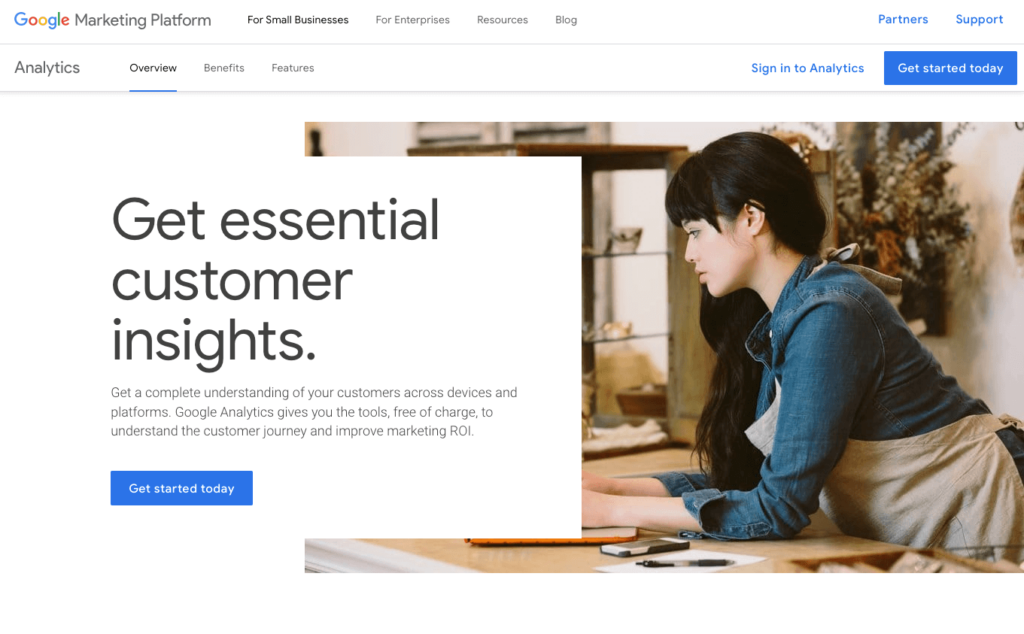This article discusses how to create affiliate marketing ads that resonate with your audience. You can increase conversion rates and funnel consumers into your affiliate marketing campaigns using the various methods below.
How to Create Ads for Affiliate Marketing?
Standing out in the digital world is a constant uphill climb, especially as people are continually bombarded with ads every day. In fact, some marketing experts believe average Americans are exposed to between a jaw-dropping 4,000 and 10,000 ads daily!

So how do you become successful amidst the crowds? How do you convert views to clicks using ads for affiliate marketing? The key is to create memorable advertisements. Ones that stick out in people’s minds. Let’s take a look at some top tips about how to create ads for affiliate marketing and how you can stand out from the crowd.
1. Understand Your Audience and Create Ads That Will Resonate With Them
Before making an ad, it’s essential to know who you’re targeting. If your ads don’t resonate or aren’t relevant to your audience, then why would they click on them? Understanding who they are, their values, interests, and their behavior is crucial when developing effective advertisements.
Travelpayouts recommends a few strategies to learn more about your audience, with the most helpful tool being Google Analytics.

The amount of information and data you can pull from Google Analytics is a great place to begin learning more about your audience. You might even create audience profiles based on demographics, locations, behaviors, or other noticeable trends.
Another way to learn about your audience is to note what your most successful competitors are doing. Take a deep dive into their content and discover what works well for them, how and where they place their advertisements, etc.
Other strategies to better understand your audience include monitoring feedback and comments from users of your product or site, conducting surveys or focus groups, and continual experimentation on your content to see what resonates most.
From there, simply develop your advertisements based on these trends. With customized ads targeting specific audience profiles, your conversions and click-through rates will likely increase as you better resonate with your audience and your ads become more memorable.
2. Write a Top-Quality Ad Copy and Use Eye-Catching Visuals.
It’s vital to know your audience. It’s equally as necessary to create a visually appealing advertisement that speaks to them – mainly because humans are much more likely to respond to visual ads than blocks of text.
Marketing research suggests that consumers retain 65% of the information conveyed from a visual ad they’ve seen three days earlier. Comparatively, the same participants recalled only 10% of the information from a visual or auditory ad over the same time span. In short, visual ads are powerful. You can make your promotions more attractive to your audience by combining striking visuals with concise language and a clear call to action.
One of the easiest ways to achieve this is by utilizing pre-made banners from your affiliate partnerships. For example, on Travelpayouts, most affiliate programs provide their partners with free banners, which often include aesthetically pleasing graphics with an actionable copy. Banners are an excellent option for bloggers and other websites.

Otherwise, you can design eye-catching graphics using tools like Canva. The free online graphic design platform features numerous resources to develop eye-popping images for social media, blogs, websites, and videos. Consider these 20 design tips when creating your images.
Additionally, it’s crucial to incorporate specific phrases with your images to invoke action. The most effective terms typically utilize the following strategies:
- Possessive determiners such as you and your.
- Concisely written outline of the benefit. Like “save up to 50%”.
- Use actionable words, including “now,” “here,” or “click.”
- Create Urgency using words like “Limited,” “soon,” or “Today only.”
Using one or a combination of multiple of these phrases will increase engagement and clicks to your affiliate partners. Which ultimately increases your chance of earning more money.
So whether it’s pre-made banners like those available through partners on Travelpayouts or designing your own graphics on a tool like Canva, it’s important to incorporate top-quality, actionable copy with striking visuals. Doing so will likely increase your click-through rates and audience engagement.
3. Use Storytelling to Emotionally Connect With Your Audience.
By nature, we’re emotional beings, and our feelings heavily influence our decision-making. That’s why, frequently, the most memorable advertisements use the power of storytelling to appeal to customers’ emotions. By connecting with your audience emotionally, you can create compelling ads that resonate with them.
Obviously, humans operate on a range of emotions. So advertisements telling stories that appeal to sadness, anger, or happiness depend on your affiliate product. However, keep in mind, according to a Nielson Global Survey, humorous ads resonated most with audiences around the globe.

Although, if humor isn’t in your wheelhouse, the same study found that people resonate with real-life situations at nearly identical rates. This suggests advertisements conveying authenticity, no matter the emotions they invoked, were equally as compelling to consumers. Essentially, humor isn’t even necessary if you can identify with your audiences’ problems, struggles, traditions, culture, etc.
What would be emotionally appealing to your audience? How could you tap into these feelings to increase engagement? These questions depend on your product but should be asked to discover the angles you’ll take in your advertisements. From there, crafty content creators can efficiently utilize storytelling that appeals to audience emotions in blog posts, essays, videos, and even images of ads.
Connecting with your audience by making them smile or sharing a relatable story increases the chance they’ll interact with your content, remember your brand, and click your affiliate advertisements.
4. Experiment and Test
At the end of the day, once you’ve successfully created ads for your affiliate marketing campaigns, it’s time to experiment and test your strategies. It’s important to examine your methods periodically, as algorithms and consumer behavior constantly change.

Again, utilize tools like Google Analytics to tweak and correct. Ask yourself a series of questions.
- What ads are working? What copy or images could I improve?
- Has my audience profile changed? If so, how can I better target them?
- What projects have been most successful? Blog? Social Media? Email list? Videos?
Other informal research cues to monitor include comments, social media interactions, questions your audience asks, and competitor trends. What questions are your social media followers asking? What strategies are your successful competitors utilizing? Analyzing all of these aspects is vital in your testing.
Crunch the data, answer those questions, and adjust your affiliate marketing strategy accordingly. Getting complacent once your ads are up and running is easy, but constant experimentation and testing are crucial to operating a successful brand.
The Best Platforms to Promote Affiliate Links

Now that you know how to create powerful advertisements for affiliate marketing, it’s time to implement them on the most effective platforms. Along with any blogs or websites you own, consider promoting affiliate links on these platforms:
- Google Ads: enhances your chance of clicks by getting directly in front of the customers on search results and maps. Learn how to create Google Ads for Affiliate Marketing without breaking any rules.
- Facebook: Facebook is a social media giant with billions of users across the globe. Check out this article on how to make money on Facebook, including affiliate marketing strategies.
- Instagram: Owned by the same parent company as Facebook, Instagram is a photo-sharing social media app often used for affiliate links.
- Email List: The most significant benefit of an email list is you own it – it’s not dependent on the algorithms of a third party. Tools like MailChimp help deliver affiliate links directly to your audiences’ mailboxes.
- Videos: YouTube is the primary platform for sharing affiliate links via video content. Many times, affiliates are promoted in videos, and affiliate links are shared in the description.
Each platform has nuances that come with it. But depending on your brand, some may be more advantageous to you than others. Carefully select which ones might be most effective and go from there. After selecting, implement the best strategies to create effective ads for your affiliate marketing campaigns. Test, experiment, and tweak.
Conclusion
Creating effective ads for affiliate marketing campaigns requires careful thought and research. Without any consideration, it’s challenging to produce a memorable advertisement. However, creating ads that resonate with people is easier if you utilize the strategies we discussed above:
- A deep understanding of your audience goes a long way.
- Quality copy with concise language and clear calls to action are highly effective.
- Emotional appeals through stories, humor, and real-life experiences can steer consumer decision-making.
- Implement, experiment, and test continually to stay ahead of the competition.
Combining these aspects will likely increase your audience engagement, click-through rates, and your profits.





